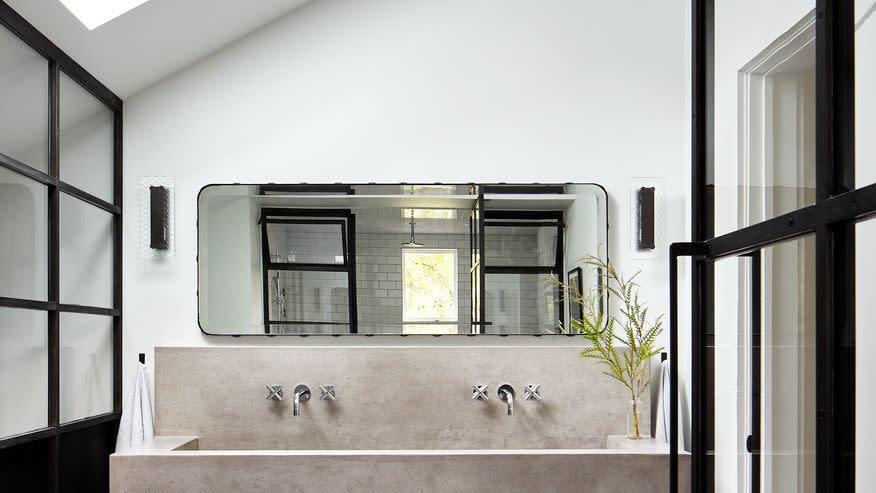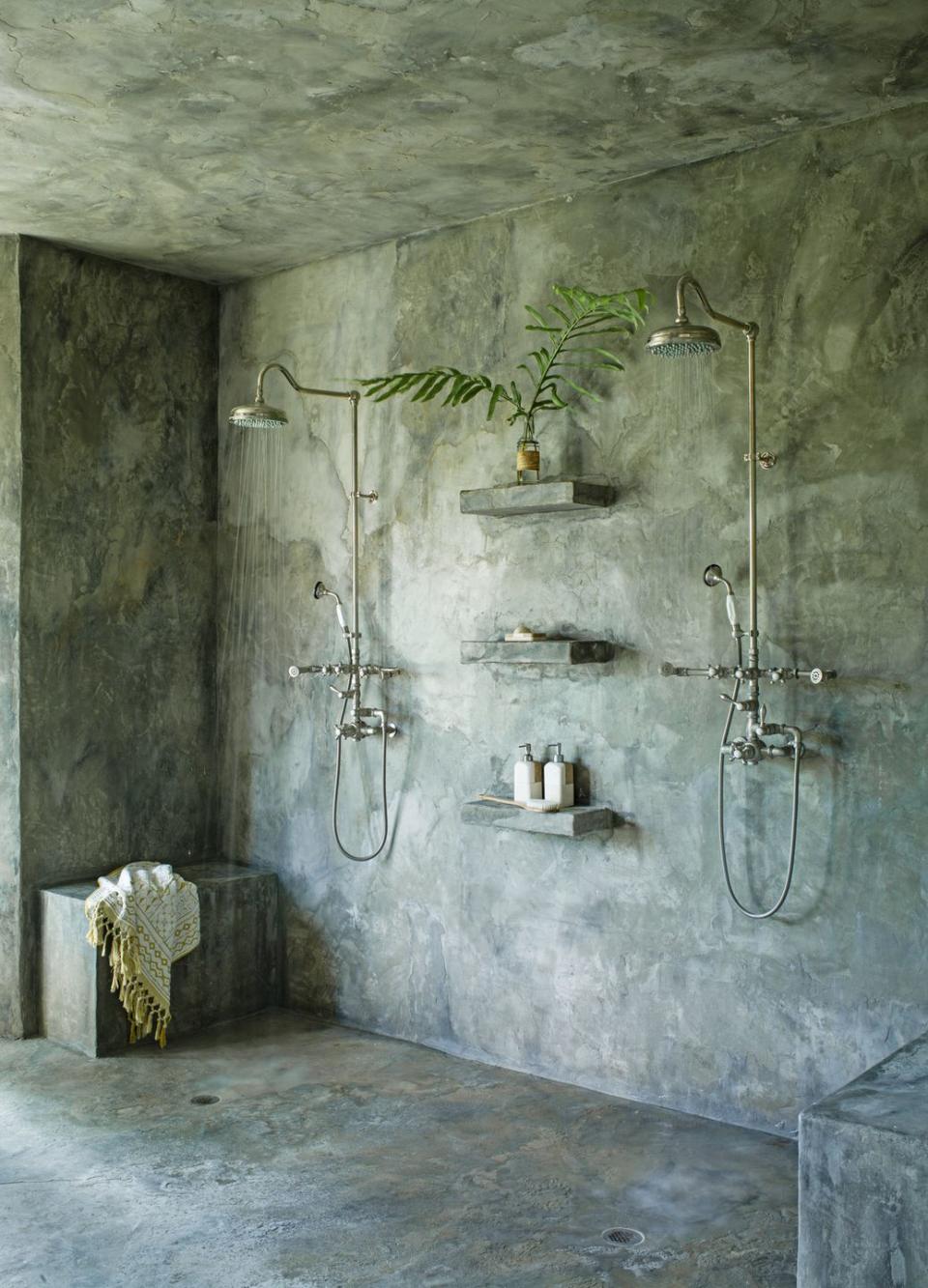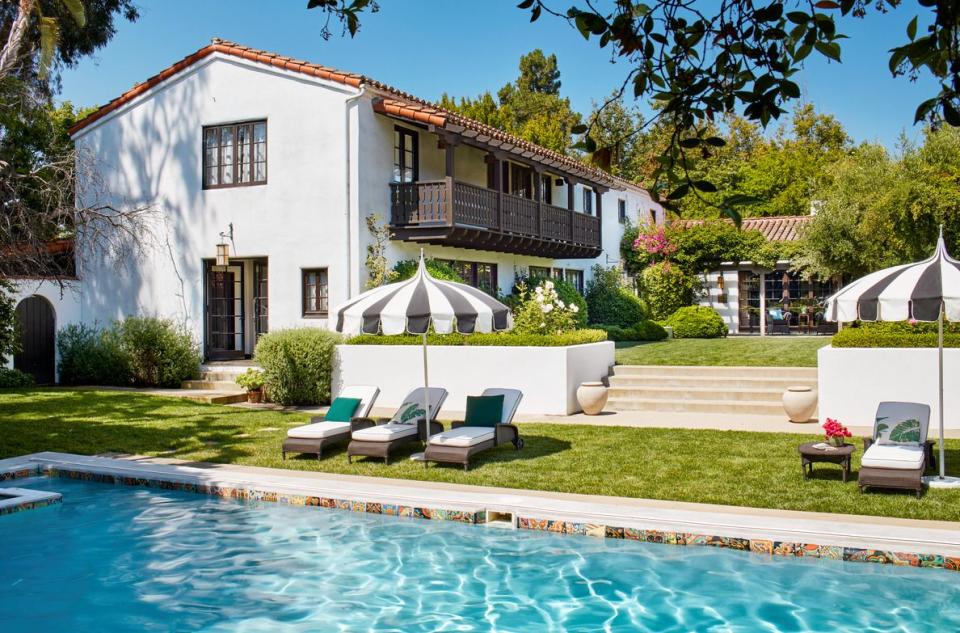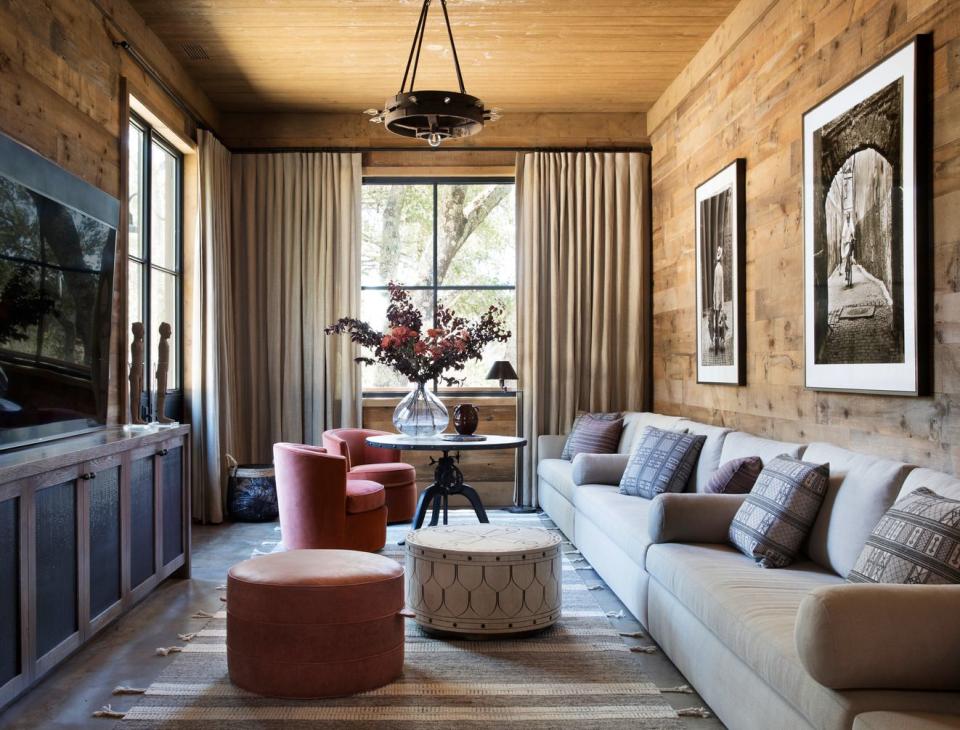What's the Actual Difference Between Cement and Concrete?

"Hearst Magazines and Yahoo may earn commission or revenue on some items through these links."
The words concrete and cement are often used interchangeably. But did you know that if you hear someone (home contractors included!) mention a cement patio or a cement sidewalk, what they’re actually referring to is concrete? Cement is an ingredient in concrete, which is a strong, weight-bearing material that’s used as the foundation of homes and in building highways, bridges, and dams. It’s also a common material for driveways, backyard pools, and patios.
The use of concrete as a construction material has been around for millenia: Historians say that ancient Arab Nabatean traders began using it to build structures in 6500 BC, even building underground, waterproof cisterns out of concrete that helped them survive in the deserts of southern Syria and northern Jordan. Today, it’s the most used material in the world.
Construction experts answered our questions about the differences between concrete and cement, including how the materials stack up against one another when it comes to durability, cost, and appearance, and how easy it is to customize these materials.
What Is Cement?

Cement is used as a binder to hold other materials together, explains Jay Sanders, who has been in construction for more than a decade and is the owner of Castle Dream Construction and Maryland Contractors, both home remodeling companies in Baltimore. It comes in a powdered form that’s made by combining crushed limestone with other materials.
Since cement has binding qualities, it’s perfect for smaller tasks, Sanders explains. For example, tile grout is usually cement based.
In a nutshell, think of cement as a binding material that’s used in concrete as well as other materials like stucco, plaster, and wall putty (the stuff that helps you smooth out your walls before you start painting).
Portland cement is the most common type of cement and is a general purpose cement. The product is made with a combination of calcium, silicon, aluminum, iron, and other ingredients. It was first made in the early 19th century by a bricklayer named Joseph Aspidin of Leeds, England, who created it by burning powdered limestone and clay in his kitchen stove.
“With this crude method, he laid the foundation for an industry that annually processes literally mountains of limestone, clay, cement rock, and other materials into a powder so fine it will pass through a sieve capable of holding water,” according to the Portland Cement Association.
Cement is also an option for home exterior siding: Fiber cement siding is made with wood pulp and fly ash, and it’s a sturdy, inexpensive siding option.
What Is Concrete?

Concrete is used in many types of construction projects ranging from pouring foundations and footings for walls to making structural elements such as beans, columns, slabs, and walls, says Josh Rudin, who has been in the construction industry for more than 20 years and is the owner of ASAP Restoration LLC in Arizona.
You need two components to make concrete: A binding paste and aggregate materials. The paste is made up of cement and water. The aggregate materials are crushed stone, gravel, and sand. A chemical reaction called hydration causes the paste to harden and strengthen to create concrete.
“Unlike cement, concrete is a hard material that appears like a stone,” Sanders says.
You see concrete every day in buildings, on sidewalks, and on curbs. Concrete slab-on-grade is a popular foundation material, and many backyard or municipal pools are made with concrete, which is poured into a large prebuilt mold. Poured concrete floors and concrete countertops are also popular for modern home interiors.
What Is the Most Popular Form of Concrete?
Ready-mixed concrete is the most commonly used form of concrete. It accounts for about 75 percent of concrete production. This is the material that’s delivered to job sites in an unhardened, pliable state. When the water, aggregates, and Portland cement are combined, the mix starts to harden and solidify into the durable, rock-solid masses.
Precast concrete is the type of concrete that’s poured into a mold. It can be used to make walls, beams, and even stairs. On a smaller scale, precast concrete can be used to make pavers or bricks.
How Cement Differs from Concrete

Appearance
Concrete has a more rocky texture, feel, appearance to it than pure cement does, Rudin says. Cement is more versatile: It can be made to feel glassy smooth or just as rocky as concrete.
Cost
Both cement and concrete are considered affordable materials. Nationwide, the cost of concrete is between $140 to $170 per cubic yard, according to Concrete Network, which connects homeowners with contractors. Average ready-mix prices are about $157 per cubic yard.
Durability
Cement isn’t as strong or as durable as concrete, Rudin says. Cement is a binding agent that you can use in small projects; otherwise, you can’t use it in place of concrete.
Customizations
Not only is concrete durable and versatile, but you can also customize it. Contractors can use stamps to give concrete texture so that it resembles stone. It’s popular on pool decks because the added texture makes the surface less slippery. Aside from the gray you probably associate with concrete, there are lots of color options ranging from a pinkish-red salmon color to moss green and slate blue.
FAQ
What Is Better: Concrete or Cement?
Cement has binding qualities, which makes it perfect for smaller tasks like grouting and small concrete repairs, Sanders says. It sets within 24 to 48 hours, so it’s a great choice for quick, minor DIY projects.
On the other hand, concrete is used for larger construction projects like buildings, bridges, home foundations, and roads due to its durability and strength.
Is It Cheaper to Buy Cement or Concrete?
Since cement is a component of concrete, it’s not an apples-to-apples comparison. You can get a 10-pound bucket of quick-setting cement mixture at home stores for about $10. Meanwhile, homeowners can expect to pay about $5.50 to $9 per square foot of concrete for materials and labor, according to the Concrete Network.
What Lasts Longer: Concrete or Cement?
Concrete can last for up to 100 years, Sanders says. While you can use cement to fix a cracked curb or for grouting, it’s not usually used on its own, so there’s not a comparable lifespan range.
Working on a design project? Let us help!
Follow House Beautiful on Instagram and TikTok.
You Might Also Like

